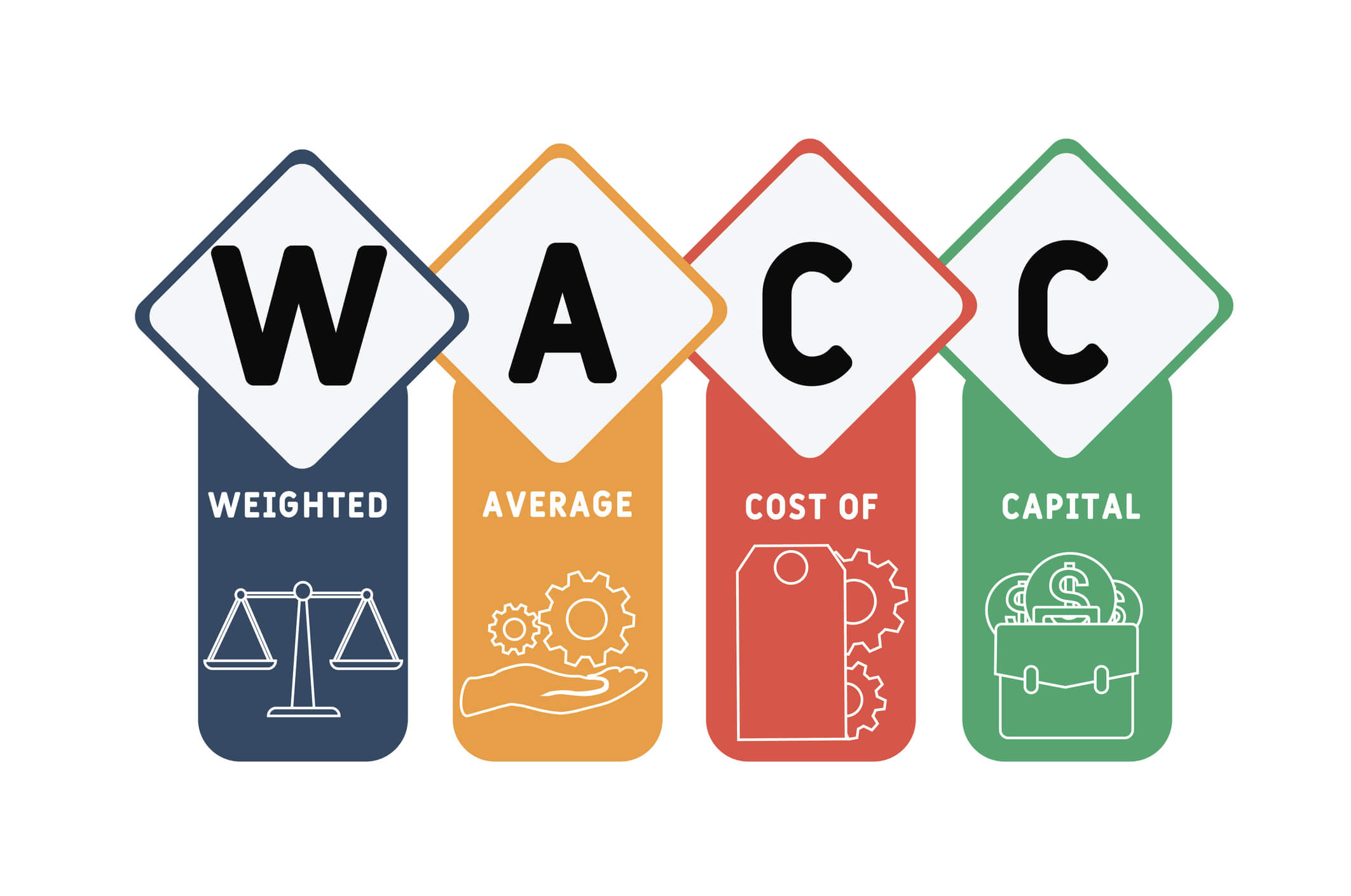The WACC is one of the market indices used to secure the return on investment. Without a doubt, this is a typical issue for everybody who makes financial investments.
As you know, an investor will never deposit money where he believes it will not be lucrative. Therefore, it has a minimum credible indicator of how much capital invested in a firm should create profit, functioning as a parameter with the WACC.
The amount denoted by the Weighted Average Cost of Capital also defines what percentage of the company’s capital is dedicated to paying creditors. In this sense, it serves as a light for avoiding indebtedness.
It also considers investor engagement and the expected Economic Value Added (EVA). That is, the return on investment, which is charged as a cost.
The idea of this article is precisely to make understanding the WACC, this important financial indicator, more straightforward.
What is WACC – Weighted Average Cost of Capital?
The WACC (Weighted Average Cost of Capital) is a weighted average in economic jargon.
It implies that the value retrieved by its computation reflects each piece’s weight in a company’s finances.
It will help if you consider that the WACC is one of the metrics that projects seek third-party finance in the execution phase. The cost of capital for the development of a firm is incorporated in its calculation.
Nothing could be fairer; every new firm faces risks and hazards.
As a result, investors must have a safety margin on the return earned by their invested capital, correct?
That is why measuring the weighted average cost of capital, which defines how much profit an investment should generate, using one year as a reference, is vital.
 What is the WACC for?
What is the WACC for?
It is easy to understand that the WACC is primarily used as an index to determine how much return an investment provides. However, it also aids in calculating the value of an opportunity in this regard.
As a result, the WACC may assess a company’s ability to create a positive economic spread, the difference between the ROI and the WACC. As a result, it must always be less than the ROI, resulting in the previously mentioned EVA.
Given the preceding, it is evident that it should only use the weighted average cost of capital in highly restricted circumstances and scenarios.
A business, for example, that wishes to attract angel investors can and should utilize the WACC as an attractive element.
It is also essential to understand that the less you rely on third-party funds, the lower this index.
Therefore, the security of investors will be greater as more equity capital composes its equity in its initial phase.
 How to Calculate WACC
How to Calculate WACC
It is critical to emphasize that the WACC reflects a firm’s risk to external investors.
The link is proportionately direct, which means that the higher the risk, the higher the necessary return, and hence the higher the WACC.
Assume that a corporation determines the entire capital to be opened is R$ 400 thousand.
In this scenario, we have three options for generating initial capital:
- From the creators themselves
- From market-attracted partners
- Institutions of finance (banks).
WACC Formula
In the first effort, a bank request permitted the financing of R$ 80 thousand, representing 20% of the capital required to launch the firm.
The institution charges a 12 percent annual interest rate on this sum, which implies that it must pay R$ 9,600 in interest.
In turn, the new company partners stipulate a return of 16% on the amount invested, which will be R$320 thousand.
Therefore, they should receive, in the form of profit/dividend distribution, a total of R$51.2 thousand.
Therefore, per year, the new company will pay a total of R$ 60.8 thousand (9.6 + 51.2), which represents a capital cost of 15.2%.
It can do all these calculations by applying the WACC formula:
WACC = Ke x We + Kd x Wd, in which:
- Ke = cost of equity
- Kd = cost of third-party capital
- We = percentage of equity in the capital structure
- Wd = percentage of third-party capital in the capital structure.
If the corporation is taxed under the Real Profit regime, it can also deduct any Income Tax (IR) deductions applicable to loaned funds in this computation.
However, because it is more appropriate for corporations taxed under Simples, it will always compute the Weighted Average Cost of Capital without considering the IR.
 About Complete Controller® – America’s Bookkeeping Experts Complete Controller is the Nation’s Leader in virtual bookkeeping, providing service to businesses and households alike. Utilizing Complete Controller’s technology, clients gain access to a cloud platform where their QuickBooks™️ file, critical financial documents, and back-office tools are hosted in an efficient SSO environment. Complete Controller’s team of certified US-based accounting professionals provide bookkeeping, record storage, performance reporting, and controller services including training, cash-flow management, budgeting and forecasting, process and controls advisement, and bill-pay. With flat-rate service plans, Complete Controller is the most cost-effective expert accounting solution for business, family-office, trusts, and households of any size or complexity.
About Complete Controller® – America’s Bookkeeping Experts Complete Controller is the Nation’s Leader in virtual bookkeeping, providing service to businesses and households alike. Utilizing Complete Controller’s technology, clients gain access to a cloud platform where their QuickBooks™️ file, critical financial documents, and back-office tools are hosted in an efficient SSO environment. Complete Controller’s team of certified US-based accounting professionals provide bookkeeping, record storage, performance reporting, and controller services including training, cash-flow management, budgeting and forecasting, process and controls advisement, and bill-pay. With flat-rate service plans, Complete Controller is the most cost-effective expert accounting solution for business, family-office, trusts, and households of any size or complexity. 



